Is your yard starved for sun? Turn your backyard into a thriving oasis with these tried-and-true shade garden plants.
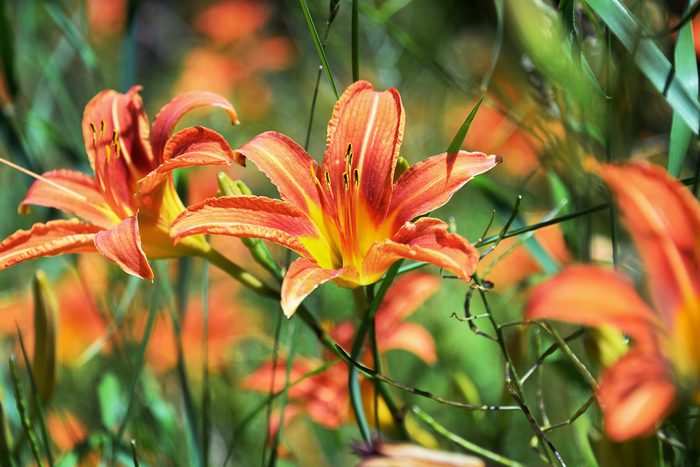
10 Resilient Deep Shade Plants for Your Garden

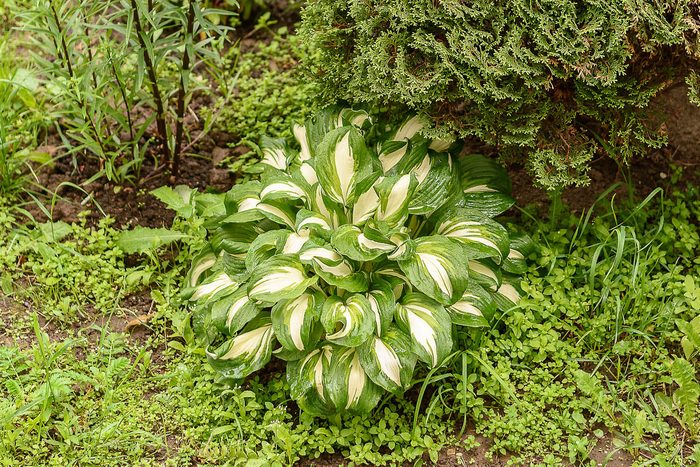
Top Plants for Heavy Shade Areas: Hostas
Any “best of” shade list has to begin with hostas. This hardy plant is known for adding texture and color. While some hostas tolerate sun, those grown in partial shade usually produce the best-looking and longest-lasting leaves. Dense, leafy clumps make way for stems of blossoms that rise to three feet above the prized foliage. There are so many varieties on the market, chances are one or several will fit your garden.
The hosta is a very shade-tolerant perennial that comes in a large variety of cultivars,” says Paul Knapp, owner and principal designer at Landscape Architectural. “What I love about it most is that they are all unique according to size and characteristics. They also really give a solid leafy base to all the other flowering perennials in your garden, helping to emphasize certain plantings. Some varieties even have a tropical feel that provides a fun and relaxed environment. Mixing different varieties together can provide some amazing results in your garden. I like to call it a ‘Hosta Fiesta’!”
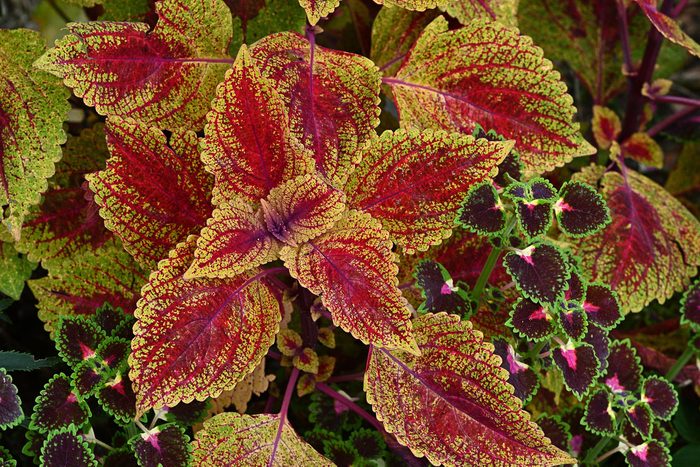
Top Plants for Heavy Shade Areas: Coleus
Gardeners are constantly battling shady spots in backyards, always on the lookout for pretty shade annuals or shade-loving flowers. Sometimes, it seems nearly impossible to find something with color to add that much-needed pizzazz to shady areas. Well, make room in your garden for fast-growing, trouble-free coleus. It tolerates part shade and is a well-suited low-light garden plant.
A lot of people think Coleus is a shade lover. It will survive in the shade, yes, but for best results and more intense color, it benefits from a little morning sun. Its leaves are often painted in a striking mix of ruby red, electric green, deep purple or sunlit yellow, based on the varieties you pick. The edges come with contrasting views, delivering more punch to the otherwise mellow-looking shaded garden.
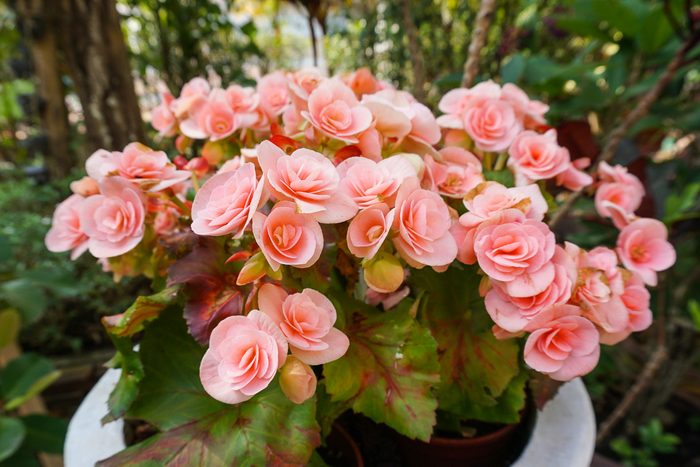
Top Plants for Heavy Shade Areas: Begonias
Begonias are the champs of container gardening and planting in shady areas. Though they’re usually grown outdoors as annuals, these are actually perennials when protected from frost and freezes. More interestingly, if you’ve ever wondered if flowering plants can survive in shade, Begonias prove they can. Like the Coleus, these shade-loving flowers can bring excitement to your garden. No light? No problem. The Begonia will still burst forth with its uniquely asymmetric patterns of leaves, speckled with flowers of red, pink, or white of yesteryear, which are being supplemented with brilliant yellows, corals and oranges in today’s market—depending on the variety.

Top Plants for Heavy Shade Areas: Hydrangea
“This late summer bloomer is a staple in 85% of my design work. Every variety of hydrangea always gives that ‘Wow’ factor come August [and] September,” said Knapp, describing the popularity, resilience and relevance of Hydrangeas in shady area gardening.
“What’s cool about the hydrangea is that by changing the acidity of the soil with certain varieties like the ‘Endless Summer’ Hydrangea, you can change the color of the flower petals from its standard white to blue, lavender, or pink,” Knapp says of the variety brought about by Hydrangeas. Their clustered, cloud-like blooms can create a soft, yet stunning aura in the dimly lit spaces of your backyard.
Being shade-loving flowers, the blooms are complemented by a lush foliage of leaves that bring a dose of serrations to the mix. The vibrant green plastered across these leaves punctuates their floral counterparts, and can further punctuate your low-light garden.

Top Plants for Heavy Shade Areas: Pansies
There’s arguably no more cheerful flower than the garden pansy. With their big bold faces, brilliant colors ranging from bright yellow to deep purple and new varieties that even include splashes of pink, these flowers are a favorite in most cool-season gardens.
Pansies like the cold and can actually handle light freezes and even some snow, making them resilient and adaptable to winter conditions.
The pansies’ petals almost seem hand-painted, with a dark center and intricate patterns. If you want to add color to containers, borders, or window boxes along your shaded garden, pansies can make for a great addition. However; they dislike hot, muggy weather and will quickly rot when the heat of a southern summer sets in. They love full sun but can take shade, and require regular water to flower their best. Here are the best shade perennials that won’t take over your garden

Top Plants for Heavy Shade Areas: Torenia
Often called Wishbone Flower, torenia has become more popular in recent years as gardeners realize its value for shade gardening. Another deep shade plant with shade-loving flowers, it can complement the vibrance brought about by pansies. The trumpet-shaped blooms also make it perfect for containers or hanging baskets. Once found mainly in blue and pink, torenia is now available in yellow, orange, and multi-colored blooms. The plant thrives in both partial and full shade, but doesn’t tolerate being dry, so plan to give it plenty of water during the hot months.
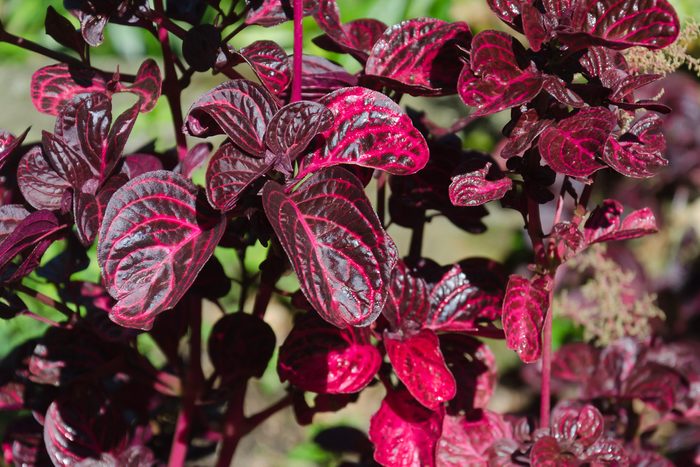
Top Plants for Heavy Shade Areas: Iresine
Iresine or Alternanthera is a tropical perennial with showy green foliage that is irregularly splashed with white and pink. This plant thrives in partial shade or sun and is great as a ground cover. Despite being a great deep shade plant, Iresine’s colors pop when it’s exposed to a little bit of sun—much like the Coleus. Besides ground covers, Iresines are also a perfect choice if you’re looking to accent your mixed beds with a bit of rich hues.
This plant also looks beautiful spilling out of pots or baskets, making for a great cascading aesthetic and for adding a tropical touch to your low-light garden.

Top Plants for Heavy Shade Areas: Bleeding Heart
The delicate foliage and heart-shaped blooms make the Bleeding Heart a captivating spring shade favorite. Its fern-like texture adds an airy aura, complemented by pendulous blossoms that enhance your dimly lit garden space.
Just know that this self-seeding plant is an early bloomer, but it holds its leaves and flowers sporadically through summer. Wait to cut it back, and you’ll see a spectacular show of blooms next year. Besides its shade tolerance, it’s resilient and also low-maintenance, thriving in moist spaces.

Top Plants for Heavy Shade Areas: Daylilies
Daylilies are so common that they’re often overlooked. Growing them is easy and rewarding. While they are low maintenance, daylilies do need to be divided every few years. Their grass-like foliage creates a lush backdrop for any shaded garden setting. The trumpet-shaped flowers range from fiery reds and bright yellows to whites and deep purples, adding allure even to surrounding low-light garden plants.
They spread by budding new small plants next to the main one. Over time, they’ll become crowded and produce fewer flowers. In late summer, don’t forget to dig up the whole clump and use a shovel to split into smaller chunks. Spread them out and replant, or share extras with friends and neighbors.
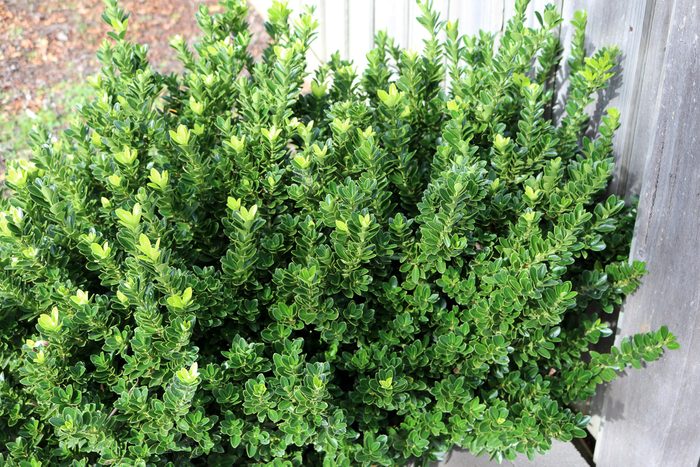
Top Plants for Heavy Shade Areas: Green Velvet Boxwood
Another favorite from the expert, green velvet boxwoods are hardy evergreen plants that add a lively touch to your low-light garden. Beyond its color, it also adds structure and volume to your garden. Recognizing the resilience of boxwoods, Paul says, “This leafy evergreen retains its foliage all throughout the winter and is my favorite shrub to plant up against house/building foundations,”
However, he does point out that this plant is more nuanced and might come with some unique requirements. “While the green velvet boxwood needs at least 4 to 6 hours of sunlight, it can tolerate a fair amount of shade for most of the day. Planting them close together (approximately 2’ to 2.5’ apart on center) will allow you to shape them into a single formed hedge.”
How do I Care for Plants in a Shaded Area?
Caring for deep shade plants entails a few unique steps that you might want to consider if you intend on keeping the garden vibrant. Here’s what you should know:
- Select the right plants: Plant selection goes a long way in the future of your garden, and only plants suited to deep shade will thrive. Besides, you can also speak to the experts at your local nursery or gardening groups to understand what grows well in your area and take a look at the plants’ light preferences on tags or labels.
- Soil focus: Paying attention to the soil is key. Enrich with organic matter and watch out for excess moisture.
- Water wisely: Avoid over-watering since low-light gardens tend to remain damp. However; the presence of trees can also dry them out. Monitor moisture closely.
- Keep it airy: Air circulation is crucial to shaded plants. Humidity attracts fungus and pests, good air flow can dissuade them.
- Maintenance: Prune regularly and remove dead or damaged leaves and twigs to avoid attracting pests.
- Pest control: Deep shade gardens can often attract pests like termites, slugs, or snails. Use a combination of natural methods to protect your plants and your house.
About the Expert
- Paul Knapp, is the Owner and Principal Designer at Landscape Architectural. He has extensive experience in providing landscaping and design solutions to households across the United States with a predominant focus on the Midwest right unto the East Coast.




















